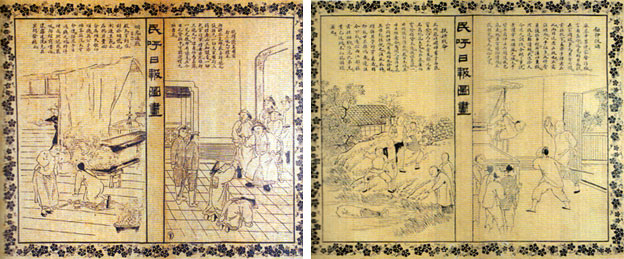
By the mid-century the comic book was finding a place in China. At first the comics were gag stories or political cartoons. Some of the earliest comics rooted in the martial arts were adaptations of the Journey to the West and the Water Margin, which was even referenced in Fist of the North Star. The story of the Water Margin was based on the 108 Stars of Destiny. The rogues, soldiers, bandits and outlaws that made up the cast of 108 heroes changed the landscape of popular fiction. These heroes came from different walks of life, some were fishermen and scholars simply fed up with oppressive regimes and fought back in their own ways.
The Water Margin created the archetypes that would be featured in many martial arts stories, films and even games. Everyone from the large brutish brawler to the gentlemanly fighter was highlighted in the Water Margin. The story of a martial arts pilgrim that travelled the countryside looking for battles sounded familiar. Add that this character became legend by killing a tiger with his bare hands. People might assume it was attributed to Ryu or Mas Oyama but in actuality it was a character named Wu Songsome 800 years earlier. The Water Margin was translated into Japanese centuries later where the 108 Heroes would form the Suikoden legends and become ingrained into Japanese culture.
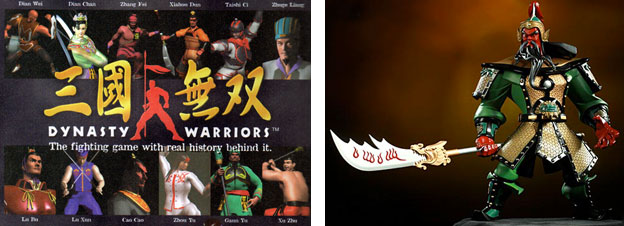
It was impossible for Japan to separate the influences of the Chinese especially when it came to feudal-era legends. The Romance of the Three Kingdoms and Water Margin adventures inspired the modern RPG, fighting and brawling videogames. These characters were visualized first in wood block prints but really reached the masses in comic book form. The Chinese comic book, or manhua, was considered a contemporary to the Japanese manga. Both words have Chinese roots which roughly translated to comics or cartoons. Both the weekly serial manga and manhua formats that audiences recognize today originated in the 1940's.
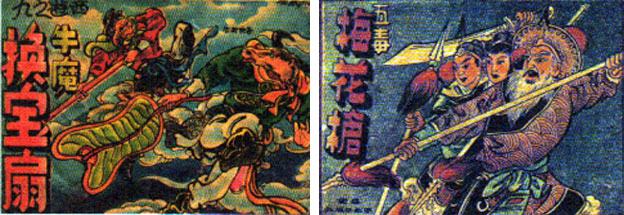
There was a sub-genre of the manhua that had gained prominence through the 1960's, running in parallel with the boom in Hong Kong cinema. The lianhuantu were Chinese-stye action comics, they were not always martial arts stories. Some were crime, horror or science fiction stories. The lianhuantu tried to present the fighting and philosophy in a context familiar to the mainstream, in this case using qigong and kung-fu as a point of reference for the character's amazing powers and abilities. It was not uncommon to see popular Western horror characters like Dracula fighting martial arts masters. This mixing of genres was something not usually seen in US comic books. The manhua books came out weekly in newsprint form. Successful writers and artists had to crank out material at a feverish pace.
The person that had the largest impact on martial arts manhua was Wong Yuk Long aka Tony Wong. Considered the godfather of martial arts comics, Tony began producing art and stories as a teenager. He was one of those artists that had to have dozens of pages finished every week in order to keep up with the writing. His output and influence was the equivalent of Jack "King" Kirby, the creator of such icons as the Fantastic, Four, the Avengers and the X-Men. Mr. Wong's first breakout hit was Little Rascals which was released in 1970. The title had a simple style, with large cartoonish characters drawn in early-manga proportions, with large expressive eyes and rough anatomy. The title was later renamed Lung Fu Mun / Oriental Heroes in 1975. The series was notable because it put kung-fu masters in a modern context. The heroes would fight mobsters, thugs and crooked officials to keep the people on the street safe. It was a violent and sometimes culturally insensitive series not for the faint-of-heart. For example, early on in the run the main hero got put in jail where three prisoners drugged and tried to rape him. A fourth prisoner named AIDS scared them off because of his namesake disease.
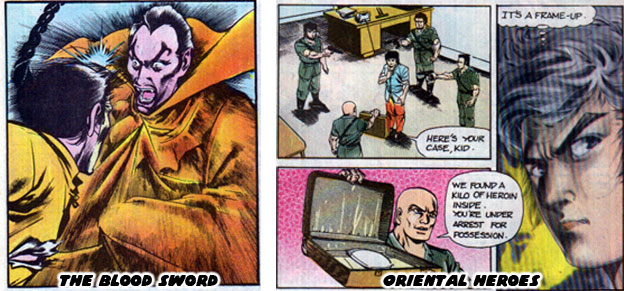
One of the things that Tony contributed to the genre was gratuitous gore and violence. His work had predated Hokuto no Ken and Baki the Grappler by decades. It was entirely possible that Tetsuo Hara and Keisuke Itagaki, the creators of the Japanese manga titles, were inspired by the Wong stories. However his contribution to martial arts comics was much more important than that.
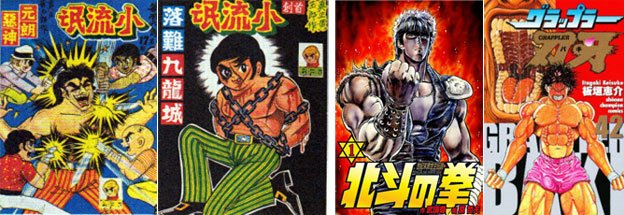
Tony was not all gore without substance. He penned many different types of stories and heroes through the decades. The majority of which were not as violent or graphic as the subject matter in Oriental Heroes. In fact, a good deal of his work was actually beautiful to look at with just the right amount of comedy, action and drama for readers. The comics with his name on it were either written or drawn by him, in many instances he did both. He would pencil in his work and then go over it with a fountain pen and traditional Chinese hair brush, giving his inking style and those of other manhua artists a distinct look. He had a team of artists fill in details, patterns on clothes or scenery. These artists learned to draw in his style and had incorporated their own elements to the development of the manhua.
The one thing that seemed to make Hong Kong comics inferior to titles from Japan or the west was a lack of print and coloring technology. A great deal of comics were still using four color presses on news stock paper well through the 80's and the early 90's whereas comic studios in the USA had gone to digital color and printed on magazine paper. The one advantage that the manhua had over US comics were the painted and airbrushed panels and pages. The major story scenes or close ups of characters would actually be paintings. When the Chinese black and white ink brush format was mixed with full-color paintings then the panels would jump off the page. The art style would remind audiences why manhua was its own unique comic format and not all that inferior to other graphic novel formats.
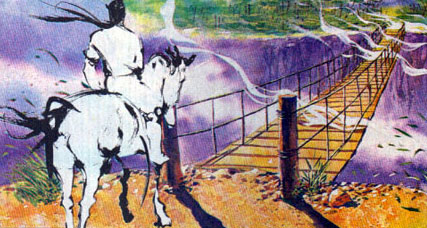
Tony Wong worked feverishly to get a comic book company off the ground, creating and closing several studios through the 1970's. In the 80's Tony found his niche when he formed Jade publishing. He had partnered up with rival writers and artists to put just about all the manhua titles under one umbrella. This monopoly on the industry did not go right to his pockets. He worked on promoting the brand through Asia and even the US. He bought up state-of-the-art printing presses and modernized the Hong Kong comics industry almost single-handedly. The company became so large that it was listed on the HK stock exchange, making Tony an overnight millionaire. Unfortunately a Wall Street crash at the end of the '80s saw the end to his first empire. He tried forming a new company right away but was convicted and sent to jail for forgery. After a few years he got out and went right back to work. Trying to find new partners and set up another publishing house. His new company was labeled Jade Dynasty, that company grew and by the end of the '90s had evolved into King Comics, becoming again the largest publisher in Hong Kong. Tony's rags-to-riches-to-rags-to-riches story was inspiring but not as much as what Jade contributed to the martial arts format.
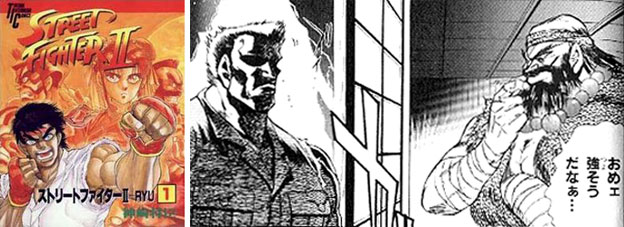
The Street Fighter universe itself was inspired by the manga format and real life fighters. In the 90's artists like Mami Itoh, Masahiko Nakahira and Masaomi Kanzaki from Japan returned the favor by making manga titles out of the games. The influence of the artists to the games became cyclical. The oldest of the manga, Kanzaki's Street Fighter II which was released in 1993, put a face and a name on the master of Ken and Ryu. The other artists enjoyed having their contributions recognized by Capcom as well. Nakahira designed Karin Kanzuki to be a rival to Sakura in the Zero / Alpha series. The character went over so well that she was added in SF Zero 3. The artists and contributors at Udon for the modern Street Fighter comics were even selected to create the endings for Capcom Fighting Jam as well as other related promotional material.
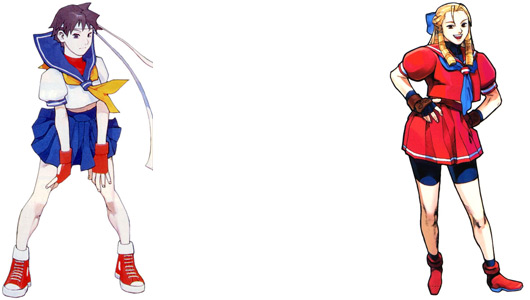
Believe it or not it was Chinese manhua that started the trend of basing comics on fighting games. As much praise as was heaped on the manga and comic book artists the first official and unofficial Street Fighter comics were published in Hong Kong. King of Street Fighter featuring art by Hui King-sam and written by Lee Chung-hing was a 1991 best seller. It presented the cast in a familiar manhua format with powers and abilities based in Chinese philosophies. It predated the Kanzaki and even terrible US Malibu SF comics by two whole years! The comic was officially licensed by Capcom and published by Tony Wong's Jade studios. A knock-off title named Street Warrior written and drawn by Chi Man was released the same year. That comic featured characters that looked an awful lot like the SF cast, except mixed into a science fiction universe.
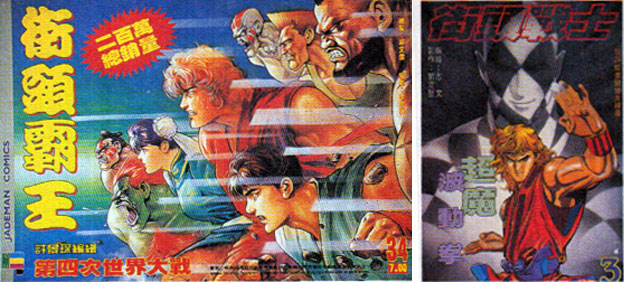
The biggest contribution of wuxia and lianhuantu to the world of design were the artistic representations of the fighting arts and the special techniques that the fighters possessed. The amazing moves featured in the Street Fighter series, including the trademark fireball, were not all based on anime or manga shows like Hokuto no Ken or Dragon Ball Z. Those special attacks and the energy that was associated with them were performed much earlier in manhua. The Chinese and Japanese-speaking audiences that enjoyed fighting comics were used to seeing all sorts of special attacks exploited by the main characters. They were in a way similar to the super-powered characters in US comic books. The audiences knew the basis for their powers were rooted in the martial arts rather than some fortuitous accident or mutant ability. These characters could do things that seemed impossible but did not have to be explained to audiences because the majority were familiar with the concepts of chi.
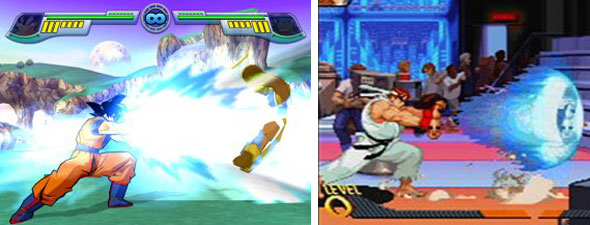
Masters of the fighting arts could harness and build their chi and concentrate it for a devastating special attack. Some fighting styles allowed the masters to project this chi energy as a ranged attack. Others held onto their chi energy and used it to reinforce their physical attacks. It was not uncommon for comics to feature characters with different types of chi-based abilities doing battle. It was a way to visualize the challenge of irresistible force versus immovable object. The variety of manhua stories and battles created the visual template for how Street Fighter would be presented years later.
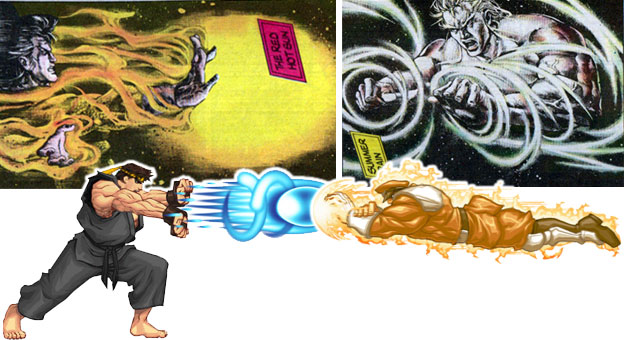
The roots of these amazing attacks were planted in qigong philosophy. Chi travelled through the meridians of the body. It could be gathered by a practitioner through meditation and exercise. This chi could then be directed through the body and even transferred from person to person to harm or heal. The use of qigong for meditation or healing was known as wuji / wuchi zhuang. In manhua stories characters could often be seen in a meditative pose gathering chi and allowing compatriots and doctors even to transfer energy onto them. All of the classical concepts of qigong were presented visually. Chi appeared as steam. In some cases it appeared like fire or electricity, evoking the elements that affected qigong practitioners.
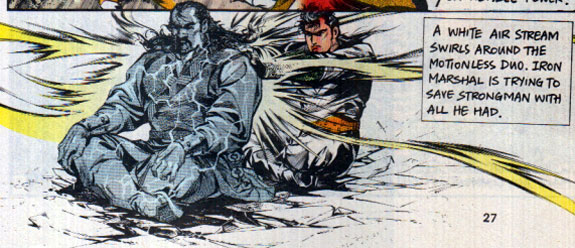
Severe injuries and even poisons could be healed but consumed large amounts of chi. If the afflicted person did not have enough chi to balance out the condition then they could die. In cases like this then someone would have to voluntarily transfer their life force, their chi, onto the injured person to help them survive. According to wuji zhuang belief several people could transfer chi onto one person to help save their life. This could shorten the time it took to heal and could even burn poisons out of a system. The practitioners of this type of medicine were usually seen standing behind an afflicted person and transferring the energy by placing their hands on the shoulders of the person ahead of them. The longer the chain, the stronger the chi. This energy could actually be rejected if the person believed they were beyond saving.
Chi appeared to have a constant push and pull of energy that only martial arts masters could freely control. Chi could be used to increase the energy behind an attack. For example, if a martial arts master wanted to severely injure another master then they might enlist the power of a colleague. The comic series the Iron Marshal, aka Steel Warrior Adventures (circa 1991) by Khoo Sheilung covered just about every reference to chi and the ways in which had been used in manhua. The series introduced the character "Three In One." He was made up of three brothers that were powerful martial artists in their own right but always attacked as one. The force that they emitted was exponentially stronger when they transferred their chi into the lead brother. This allowed them to take down any master that was far more powerful than them individually.
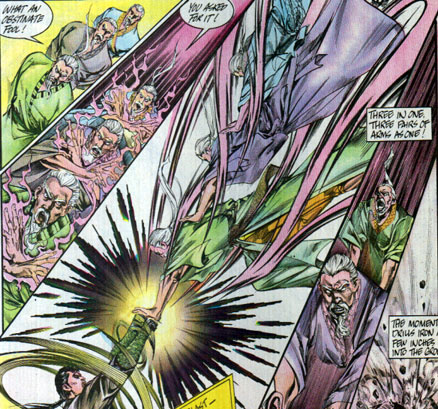
Of course every rule had an exception. Energy did not have to be absorbed by a recipient, it could always be redirected by experienced masters. In another Iron Marshal story two masters, named Elephant and Little Dragon teamed up against a character named the Bloody Duke. They sprung into action and hit the Bloody Duke with their fists and weapons. According to manhua tradition the force of the attack should have destroyed the Bloody Duke's internal organs and broken his bones.
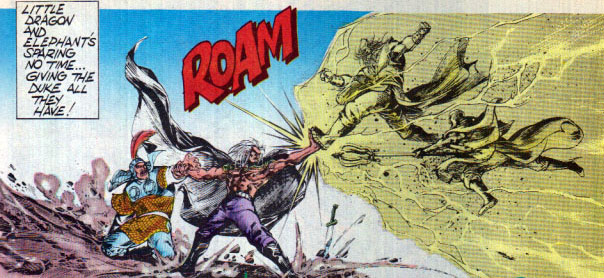
Instead the Bloody Duke grabbed the nearest enemy soldier and transferred the force of the attack to him. The poor soldier could do nothing to block the energy he had received.

The hapless soldier swelled like a balloon and burst, spilling his entrails all over the battlefield. This type of gory spectacle and outlandish martial arts power was one of the reasons why Hokuto no Ken became popular. It also reinforced the rules of chi and the manipulation of power in the graphic arts.
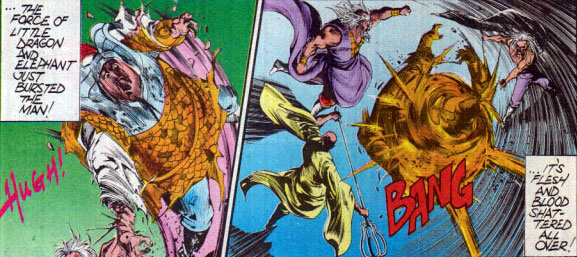
Chi manipulation colored the stories featuring martial arts characters. These stories became legend and were turned into comics and films. As the myth of chi manipulation grew so too did its influence on Western culture. Chi was the inspiration behind the Force in the Star Wars series. In Western-produced fighting games characters could project energy from their hands, it didn't matter if the developers knew how or why this tradition was started. Chi was not the only Eastern myth that influenced the evolution of fighting game characters. The next blog will dig deeper into Buddhist and Shinto traditions. As always if you enjoyed this blog and would like to sponsor me please visit my Patreon page and consider donating each month, even as little as $1 would help make better blogs and even podcasts!

No comments:
Post a Comment